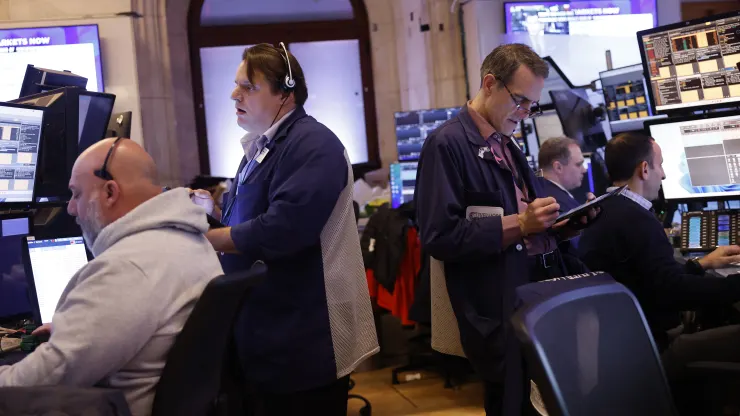After a brief respite, the Magnificent 7 stocks have again hit new highs on the heels of Nvidia’s blowout earnings: They now again comprise about 30% of the S&P 500. Throw in the remainder of the top 10 stocks (Berkshire Hathaway, Lilly, and Broadcom) and the concentration rises to about 33% of the S&P 500.
At the recent ETF conference in Miami Beach, Registered investment advisors were eager for advice on how they might get their clients to stop pestering them to invest more money in the Magnificent 7.
There was much handwringing about the dangers of over-concentration. RIAs worried that just like they get blamed for not being in the Mag 7 rally with sufficient zest, they will get clobbered by clients blaming them when (and if) they bubble bursts.
The hope of the RIAs was the market rally would broaden out.
Fat chance. That was two weeks ago, during a brief lull in the relentless march of Nvidia and the Magnificent 7.
But Nvidia’s earnings have killed the last hope of the “diversify” crowd. The numbers speak for themselves:
Major Sectors YTD
Van Eck Semiconductor ETF (SMH) up 20% (25% Nvidia!)
Roundhill Magnificent 7 ETF (MAGS) up 14% (14% Nvidia!)
S&P 500 up 5% (4% Nvidia!)
S&P 500 Equal-Weight ETF (RSP) up 2%
Is over-concentration really a risk?
On the surface, it sure seems that way. The comparisons are getting silly.
At the ETF conference, Dimensional Fund Advisors noted that the Magnificent 7 stocks were now just as large as the entire combined stock markets of Japan, UK, Canada, France, Hong Kong/China combined:
Magnificent 7 vs. The World
(MSCI All Country World Index weighting)
Entire U.S. stock market: 63%
Japan, UK, Canada, France, Hong Kong/China combined: 17.5%
Magnificent 7: 17%
Source: Dimensional Funds
That seems crazy, no? And yet, it’s not at all unusual to see concentration like this in prior periods. And it’s mostly around tech.
High concentration levels have happened often
It’s true concentration has risen in the last 10 years. As late as 2015, the top 10 stocks in the S&P 500 were only 17.8% of the index, according to a 2023 study by FS Investments.
But that was a low point. Most of the time, the concentration of the top 10 stocks has been far higher.
For example, in the mid-1960s the concentration of the top 10 was over 40% of the S&P 500.
The domination of the so-called “Nifty 50” stocks (which included IBM, American Express, General Electric, Polaroid and Xerox) in the 1960s and early 1970s regularly kept the concentration of the top 10 stocks over 30%.
It slowly declined over the next 20 years, settling between roughly 17% and 20% of the market capitalization of the S&P 500 between the 1980s and the late 1990s.
It shot up again during the dotcom and Internet boom, which again pushed the concentration of the top 10 to over 25% in the late 1990s.



